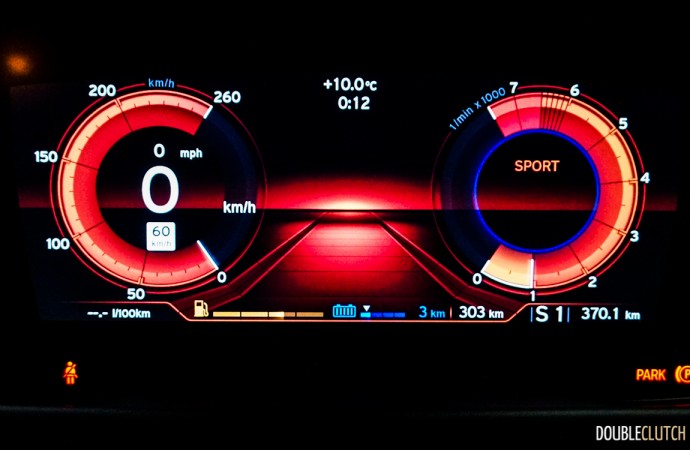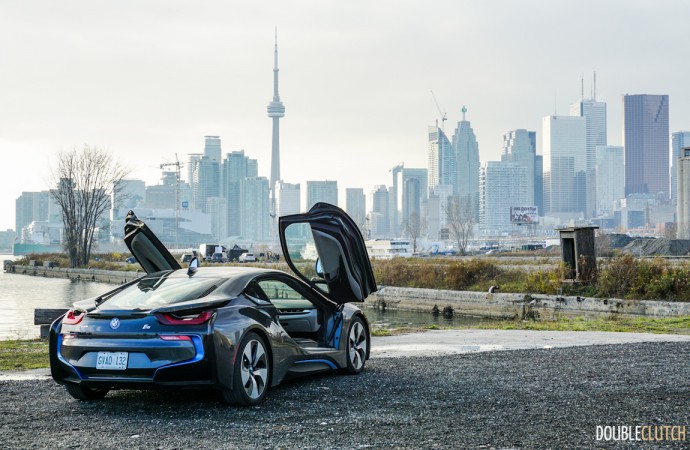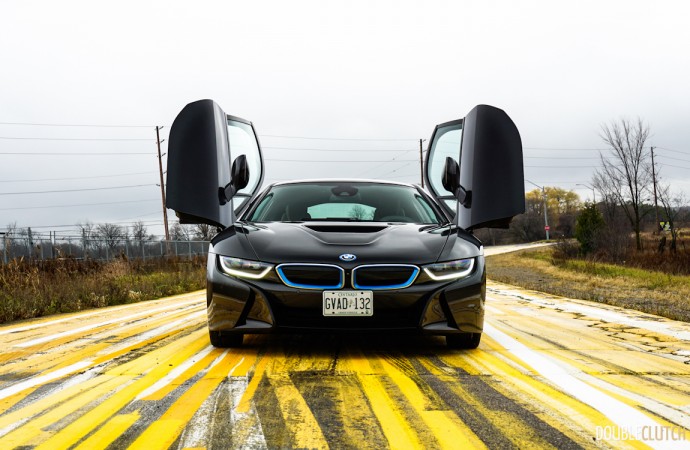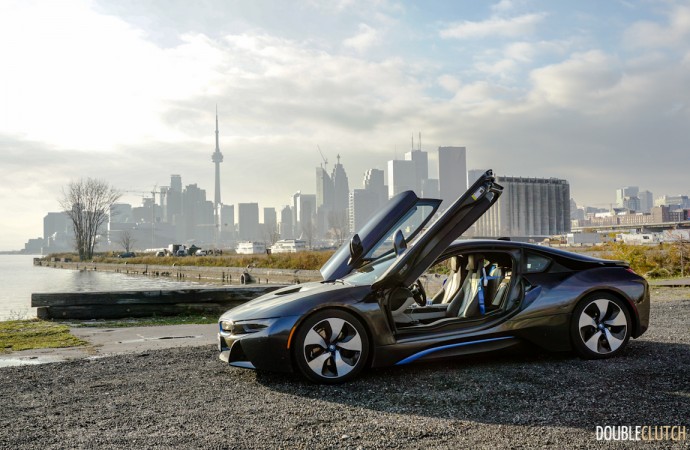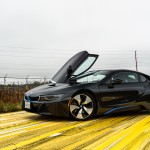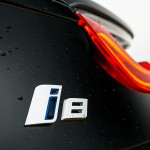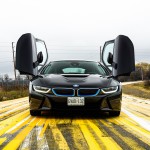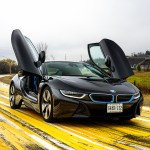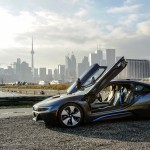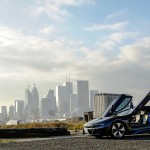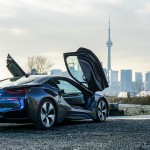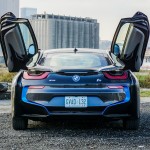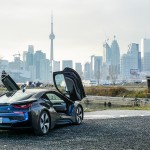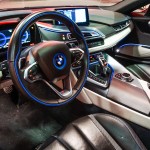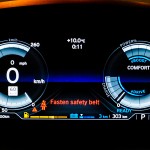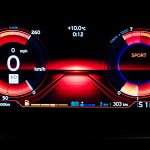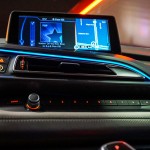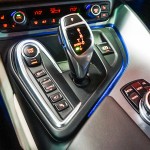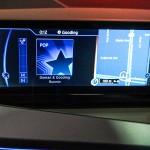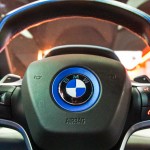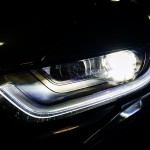Growing up as a kid in the 1990s, I was enamored with the supercars of that era. In fact, I still lust over cars like the Lamborghini Diablo and McLaren F1 more than I do today’s supercars. They may not pack the technology of current supercars, but they have an aura of passion to them that I haven’t seen in modern machines. Plus, both examples referenced have doors that open upward. Built using the latest technology and recyclable materials in favour of remaining eco-friendly, the 2016 BMW i8 is the supercar of the future. To our good fortune, we were one of very few Canadian outlets that have been given the chance to spend a few days with this technological marvel.
The styling is the single strongest point of the i8. Using scissor doors that are, according to HBO’s Silicon Valley, the “doors of a billionaire”, this is the most attention-grabbing test vehicle I have driven in a very long time. On every single trip I took with the car, I noticed bystanders and even other drivers taking photos of the car. People would approach me on the street, in parking lots, and at the gas station to ask questions about it. The reality is, with its stunning, sleek lines and futuristic lighting, the i8 looks like a concept car that has mysteriously found its way to the street.
Much like the smaller (and almost completely unrelated) i3, the i8 is built using renewable and recycled materials, minimizing its carbon footprint and ensuring it remains true to the “green” nature of BMW’s new “i” sub-brand. One noteworthy fact is that the entire passenger tub of the i8 is made of carbon fiber, meaning it’s incredibly light. At 3380 lbs., the i8 is lighter than the current production M3. Lightweight wheels on the 215-series rear tires (195 in front) help with weight reduction even more. Of course, seeing as this is marketed as a flagship supercar, I wouldn’t mind seeing some meatier rubber capable of better road-holding.
Under the “hood”, the i8 packs some interesting hardware. The primary powerplant, situated just behind the rear seats, is a 1.5L turbocharged three-cylinder, shared with the base Mini Cooper. This motor has been tuned to 228 horsepower, which, incidentally, is more horsepower per liter than the Porsche 911 Turbo S. Up front is a 129-horsepower electric motor. This pushes torque to the front wheels using its own two-speed gearbox. The 0.26 drag coefficient means the i8 just slices through the air without a care in the world, and this is where the design comes to life.
Power delivery is wonderful, and exactly what I expected. The reality is, the i8 does 0-100km/h in 4.4 seconds. This number is very fast, but the rest of the industry is catching up. For instance, the upcoming Ford Focus RS has been verified at 4.2 seconds for the same sprint. The i8 is a bit of a chameleon because of how quickly it transforms from fast to economical, and hypermiling enthusiasts will appreciate this. The typical BMW drive mode selector toggles a few settings between “Eco Pro” and “Sport+”, but on the i8 it only has two settings – “Eco Pro” and “Comfort”. I found myself never using the “Comfort” setting, opting to stay either in the fuel-saver mode or using the shift lever to enable “Sport”.
Engaging the sportiest setting engages the gasoline motor, and BMW’s supercar comes alive in the most manic sense. It does sound like a supercar should, though a lot of the noise is piped through the speakers. The six-speed automatic transmission isn’t related to the ZF-made eight-speed box in other applications, but it’s capable of delivering crisp upshifts and precise downshifts. There are paddles to do this job manually, and they’re set up in the right way (right for upshift, left for downshift) too. Slapping the shifter into “Sport” also changes the layout of the instrument cluster, from an i-themed blue to racy, reddish orange.
It’s almost as if the skinny tires hold the i8 back from its maximum handling potential, and this will likely be changed by owners who opt to add meatier rubber. Regardless, this is still a BMW – a car that hails from a company that’s specialty is building cars that excel in the handling department. The i8 has some of the best electric steering setups I have experienced to date. The weight balance is nearly perfect, and the car responds instantaneously. It’s essentially point-and-shoot, and with dynamic stability control disabled, the i8 will happily wag its tail on demand. There isn’t much in the way of analog feedback through the wheel, but BMW has ensured that purists will be satisfied by the car’s behaviour.
The most technologically advanced BMW yet is able to run for just over 30km using just electric power. This charge is attained by either plugging the car into an outlet, or by using the regenerative brakes. Unlike other PHEVs, the i8 was able to regenerate up to 20km of electric-only range on our watch. Pushing the “E-Mode” button beneath the engine start engages this near-silent drive mode. Torque is immediate and available at 0 RPM, and in this setup the BMW behaves exactly like any other electric vehicle – there will be no surprises in this regard.
We didn’t do much long distance driving over our time with the i8, but we did put about 500km on it. This mileage was mainly city, with some travel over some of Ontario’s best driving roads. There was also a generous amount of stop-and-go driving as the car was moved around for photo purposes. I also didn’t get an opportunity to plug in the car, so the only electric-only range I had is what I was able to generate in my own driving. Even still, regular operation resulted me 7.4L/100km on premium 91-octane fuel. If I had this car for more than a week, I would be able to squeeze even better mileage out of it.
The thing is, unlike the traditional supercar, BMW has engineered the i8 to be not only livable, but to provide a noticeable amount of pleasure while using it on a daily basis. Rather than being clunky and cumbersome, it cuts through traffic and the bustle of daily congestion with charm and serenity. The dynamic damping is a bit on the firm side, but still – this car is actually more livable than the brand’s own M4, a car many drive year-round. After all, as unusable as they are for adults, the i8 actually does offer rear seats with full three-point seatbelts.
Ergonomically, this BMW has an excellent driving position and all major controls are virtually identical to those in ‘lesser’ models. The climate control, gear selector, iDrive system, and drive mode select are all consistent throughout the BMW lineup. The one challenge I had was getting into the car via the unique scissor doors. They’re an amazing novelty and a fantastic fashion statement, but at 6’1, I couldn’t imagine getting in and out of this car on a regular basis, especially if wearing a suit. I found the easiest way to enter to be sitting onto the ledge, then sliding into the seat while swinging my legs over and into the car. Not being careful could easily result in scuffed door sills. Additionally, thanks to the unique shape of the i8’s doors, the front windows don’t drop fully into the doorframe.
Though not without its flaws, the 2016 BMW i8 is easily one of the most interesting cars I have ever driven. It does a remarkable job at reminding us of the current bond between the technology field and the automotive industry, and where it’s going. This past summer, we drove the outgoing model of the Audi R8 V10 in six-speed manual guise – one of the last manual transmission supercars in existence.
BMW has done an astonishing job of combining the latest in green technology with their existing philosophy. Does it drive like a supercar? Perhaps it doesn’t hold a candle to the performance marvel of other “hybrids” such as the Porsche 918 or the McLaren P1, but the i8 costs considerably less and has a different goal altogether. The result of BMW’s research and development is a plug-in supercar that’s outstanding to drive and even more surreal to look at. How’s that for a brand flagship?
2016 BMW i8 Gallery
*Exterior night photos by contributor Tishan Baldeo*



